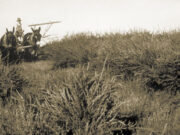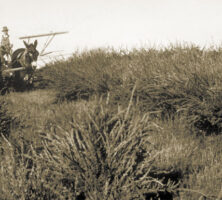William Louis Jones first attained recognition as a professor of science and agriculture at the University of Georgia and later as a journalist, serving as editor of the Southern Cultivator and then as editor of Henry W. Grady’s journal, Southern Farm. He was also the first director of the Georgia Agricultural Experiment Station (later the Georgia Experiment Station in Griffin). Through his writings on scientific agriculture and in his role as a professor, Jones influenced scores of Georgians and other southerners.
Born on a large plantation in Liberty County on March 27, 1827, Jones was the son of Mary Robarts and William Jones. A graduate of the University of Georgia in 1845, he studied medicine at the College of Physicians and Surgeons, in New York. After receiving the M.D. degree in 1848, he established a practice in Athens but soon decided to pursue a career in science. In 1850 Jones enrolled in the Lawrence Scientific School of Harvard College in Cambridge, Massachusetts, to study with the renowned Swiss scientist Louis Agassiz. A year later, he returned to Athens to serve as the professor of natural history at his alma mater. In July of that year, he married Mary Williams, a native of Athens. The couple had six children: William Agassiz, Rosa, Louis Harvey, Alexander Robarts, Joseph Williams, and Samuel Percy.
Displeased with the administration of the university president, Alonzo Church, Jones resigned in 1852 and took up farming in Morgan County. An ardent supporter of the Confederate cause, he enlisted in a state militia unit in 1863, and a year later he became the chemist in charge of the gunpowder works in Augusta. Jones returned to the university in 1866 as the Terrell Professor of Agriculture. Shortly afterward, he and his father purchased the Southern Cultivator, which they coedited for five years. In 1872 the university transferred Jones to the newly established Georgia State College of Agriculture and the Mechanic Arts, but as the arrangement did not suit him, Jones resigned soon thereafter. He sold the Southern Cultivator in 1881, though he continued to write a monthly column for it until 1884.
As a spokesman for the application of scientific methods to farming and as a sage advisor on agricultural matters, Jones won acclaim as the state’s leading authority in the field. In 1886 he returned to the university, again as Terrell Professor, and two years later became director of the new Georgia Agricultural Experiment Station. Within two years, however, the station’s board of directors had decided to deprive him of autonomy and to relocate the station in Griffin, actions that prompted Jones to resign. A year later, he left the university for good. Meanwhile, since 1886 he had been penning columns for the Atlanta Constitution and, since 1887, serving as editor of Southern Farm. When he retired in 1892, Jones was known throughout the South for his efforts to enlighten southern farmers about the importance of applying scientific principles to crop production. He died in Atlanta on August 22, 1914.






